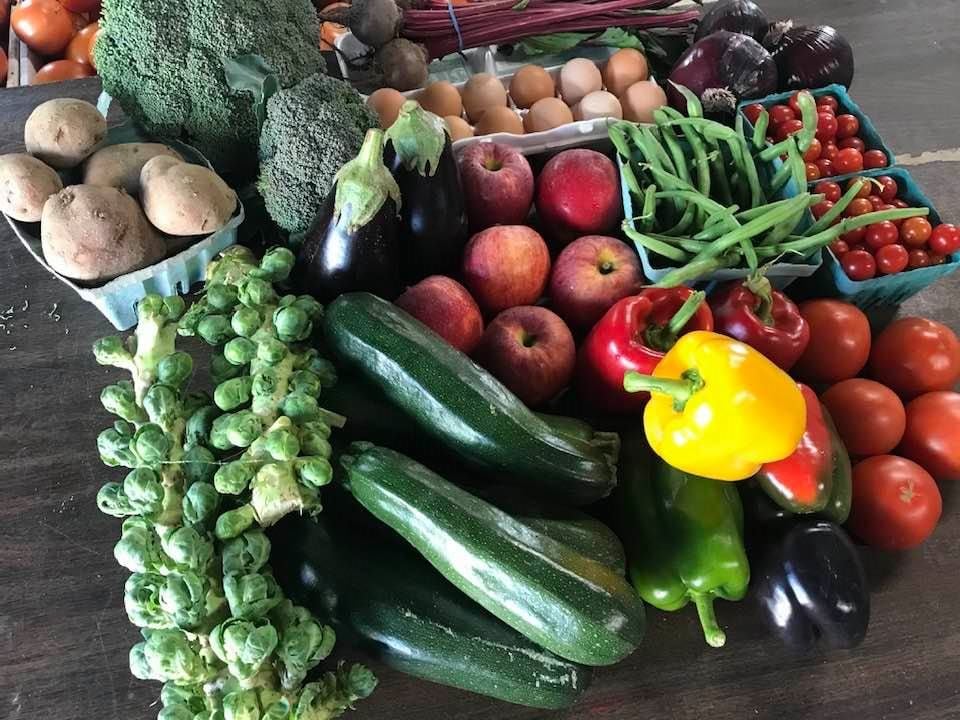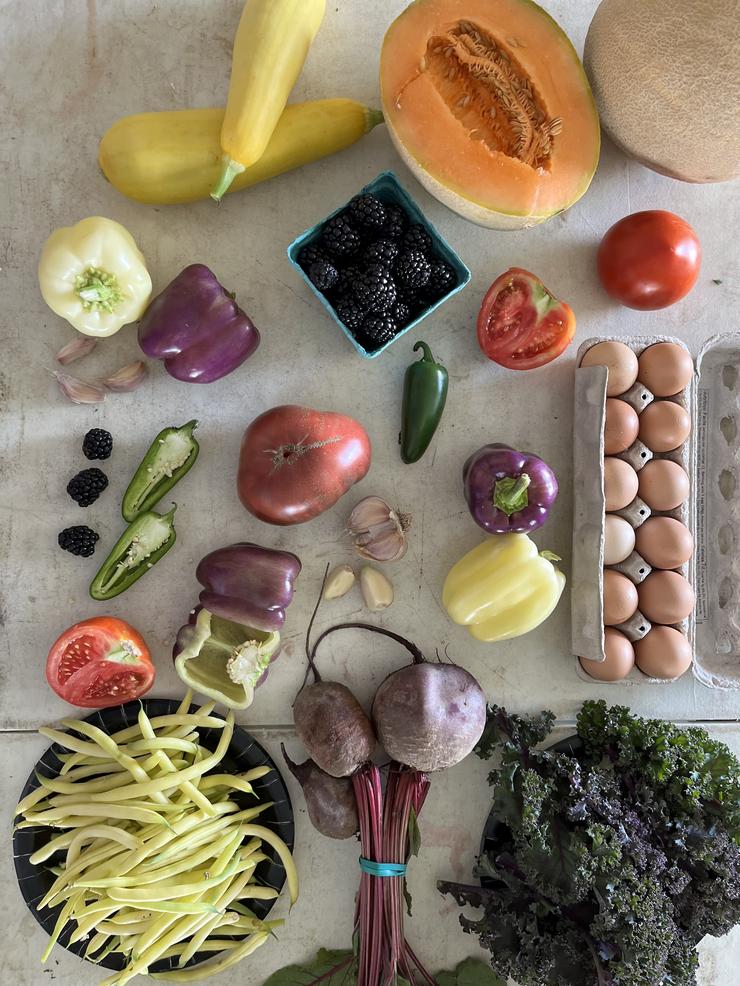WEDNESDAY PICK UP TIMES
Oberlin: 3:25 -3:40 pm
Amherst: 3:55 - 4:10 pm
Avon: 4:30 - 4:50 pm
Westlake: 5:00 - 5:15 pm
Westgate: 5:25 - 5:45 pm
Lakewood: 6:00- 6:15 pm
North Olmsted: 6:30 - 6:45 pm

Receive a weekly box of fresh, local fruit and organically grown vegetables
Oberlin: 3:25 -3:40 pm
Amherst: 3:55 - 4:10 pm
Avon: 4:30 - 4:50 pm
Westlake: 5:00 - 5:15 pm
Westgate: 5:25 - 5:45 pm
Lakewood: 6:00- 6:15 pm
North Olmsted: 6:30 - 6:45 pm
Oberlin: 2:25 - 2:40 pm
Amherst: 2:55 - 3:10 pm
Avon: 3:30 - 3:50 pm
Westgate: 4:10 - 4:40 pm
Lakewood: 4:45 - 5:00 pm
Westlake: 5:10 - 5:25 pm
North Olmsted: 5:40 - 6:00 pm
Elyria: 6:30 - 6:45 pm
Medina: From Noon Friday to 5:00 PM Saturday
1230 Park Ave. (Off of Rt. 58), Amherst
South Amherst and Vermilion
Bay Village, Lorain,
North Ridgeville and Westlake
Grafton and North Ridgeville
20900 Westgate Mall Drive, Fairview Park
(Between Target and Lutheran West High School, by Bohlken Park)
Rocky River and Westlake
14740 Lakewood Heights Blvd., Lakewood
Rocky River and West Park
5665 Great Northern Blvd,
North Olmsted
Serving Bay Village, Berea,
North Olmsted, North Ridgeville,
Olmsted Falls, and Westlake
297 South Main Street (Rt. 58), Oberlin
20900 Westgate Mall Drive,
Fairview Park (Between Target and Lutheran West, by Bohlken Park)
Rocky River and Westlake

This year, we're celebrating 15 years as a year-round CSA in the Northern Ohio area.
Our unique relationship with the Amish/Mennonite communities and local
greenhouse growers allows us to provide fresh greens, root crops, items
from storage and plenty of outdoor harvested items even in the Winter.
We are a small group of family owned, sustainable farms using organic
growing methods. In addition to organic veggies and local fruit, our CSA
offers the finest local meat, dairy, eggs, honey, syrup and a whole lot more.
Customers
receive a weekly newsletter letting them know what's in this week's box
and what add-ons are available. Skipped weeks and item substitutions are
no problem. You can join anytime of the year.
Joining our CSA program is easy! First, choose the size of the box of produce you want – the Standard Box is for up to two adults (7-14 different items) and a Large Box is for three people or more (14 -20 items). Next, decide how many weeks you want to subscribe; 4, 8, 12, 20 or 52 weeks (you can always extend your subscription) and then decide where you want to pick up from. The longer you subscribe the bigger your weekly discount!
Click here for a current list of what is available by month (Non-GMO, Pesticide free produce).
Our CSA program allows customers to customize their box using substitutions if desired. Customers receive our weekly MHF CSA newsletter which tells you what to expect in that week's box and which items are available to purchase as add-ons. You can choose to add more veggies, fruit, eggs, honey, meat, dairy, pantry items and more.
Vacation time off is not a problem for your CSA subscription. Just let us know and we'll add that week to the end of your subscription. We accept cash, checks, debit/credit cards and Venmo. Order your CSA subscription today and enjoy your own "Personalized Farmers Market Share".
Once we receive your order a confirmation email will be sent. I look forward to meeting you at pick up.


